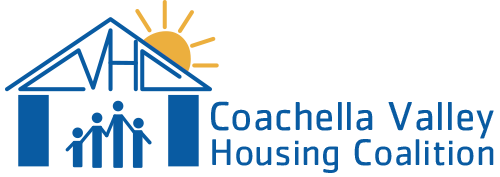Challenge: Over the years, the 58-acre Fred Young Farm Labor Camp, known as “El Campo” and home to 253 families, had deteriorated into an isolated slum community with the accompanying ills of crime, poverty and hopelessness. In 2007, Coachella Valley Housing Coalition (CVHC) was asked to take it over.
Agriculture contributes approximately $1.3 billion annually to the Riverside County, California, economy. The value of agricultural crops in the Coachella Valley alone is $650 million, or roughly 50 percent of the county’s annual contribution. Given the types of crops grown in the Coachella Valley, agriculture cannot survive without farmworkers. At the same time, the U.S. Department of Labor reports that migrant and seasonal farmworkers are some of the most economically disadvantaged people in the country. Farmworker incomes typically fall within the extremely-low to very-low-income classification.
In fact, more than one in 10 families in the Coachella Valley live below the federal poverty level. The lush golf courses, exclusive resorts and celebrity sightings at the world-renowned western communities, like Palm Springs, Rancho Mirage and Indian Wells are worlds apart from the unpaved streets, failing septic systems and unauthorized waste dumps of the eastern valley, where roughly 88,000 people live.
The Fred Young Farm Labor Camp was the first permanent farmworker housing development funded by the U.S. Department of Agriculture in Southern California when it was constructed in the 1930s as temporary wood shacks for migrants. The shacks were replaced in the 1960s with 500-square-foot, two-bedroom, cinder-block dwellings.
The Coachella Valley Housing Coalition (CVHC) was established as a response to the substandard living conditions endured by farmworkers. In 1986, CVHC built its first 50-unit apartment community to house farmworkers and their families.
Today, CVHC is one of nine U.S. Department of Agriculture Self-Help Housing Technical Assistance providers in the State of California and is amongst the largest producers of Single Family Mutual Self-Help housing in the country. CVHC has helped more than 1,900 families fulfill their dream of homeownership. CVHC also owns and operates 34 Multi-Family affordable housing developments, or 2,433 units, including two migrant-farmworker housing facilities.
The history of the relationship between El Campo and CVHC can best be told through the eyes of Juan Rodriguez, whose parents, Juan Antonio and Elizabeth, moved as teenagers with their baby son into a cramped El Campo two-bedroom apartment, joining several generations of family members.
“It was in the 1990s when my parents finally could move into an apartment of their own, a CVHC building called Pie de la Cuesta,” recalls Juan. “That was the move that brought CVHC into my life and has been a positive factor ever since, from providing us the opportunity to own our own home to helping me earn my college degree at UC Berkeley.”
After arranging financing and beginning its work at El Campo, CVHC replaced 86 of the units, planned the demolition of another 86 and began predevelopment of the final phase of new construction. In addition, CVHC ensured that El Campo’s existing residents had functioning air conditioning and heating units, since previously, families endured extreme summer temperatures that regularly exceeded 115 degrees Fahrenheit and dropped below freezing on winter nights.
CVHC then implemented its full community services programs at El Campo, with the replacement units including a free, onsite after-school program, a state-funded preschool, enrichment activities such as nutrition and health classes, an English-as-a-second-language program, summer youth and adult fitness offerings.
As the Rodriguez family developed, they took advantage of the child care program, free tutoring, tennis camp, ballet folklorico, mariachi and even opera appreciation programs. Juan’s parents applied to CVHC’s self-help program, receiving one-on-one credit and housing counseling and starting the process to become homeowners. The couple worked alongside seven other families to build their home and that of their neighbors. After working all day, they spent evenings and weekends building their dream home under the direction of CVHC staff, funded by the USDA Mutual Self-Help Housing program.
Juan’s parents wanted their children to aspire to a life better than farm work; establishing a stable home of their own was the first step toward that end. “Working in the fields from 6 a.m. to late in the afternoon was the greatest motivator to study, so that I would never have to do such backbreaking work again,” Juan explains.
Although he had never left the Coachella Valley except for grape harvests, Juan appreciated the wider world he glimpsed in high school. A good student, he tutored others in math and volunteered as a translator for the faculty. When he was accepted by UC Berkeley, CVHC provided support through its John F. Mealey College Scholarship Fund. Once there, Juan used his knowledge of how affordable housing, or the lack of it, affects family stability, safety and aspiration by majoring in urban planning and architecture. He served as an intern with CVHC in the community services department, assisting in the implementation of programs such as a STEM robotics program and an art appreciation and tennis camp. During a second internship, he worked in the multi-family department learning the process of planning, funding and winning approvals for future developments.
Transforming El Campo into Villa Hermosa, the new replacement housing, is a metaphor for how CVHC transforms lives.
